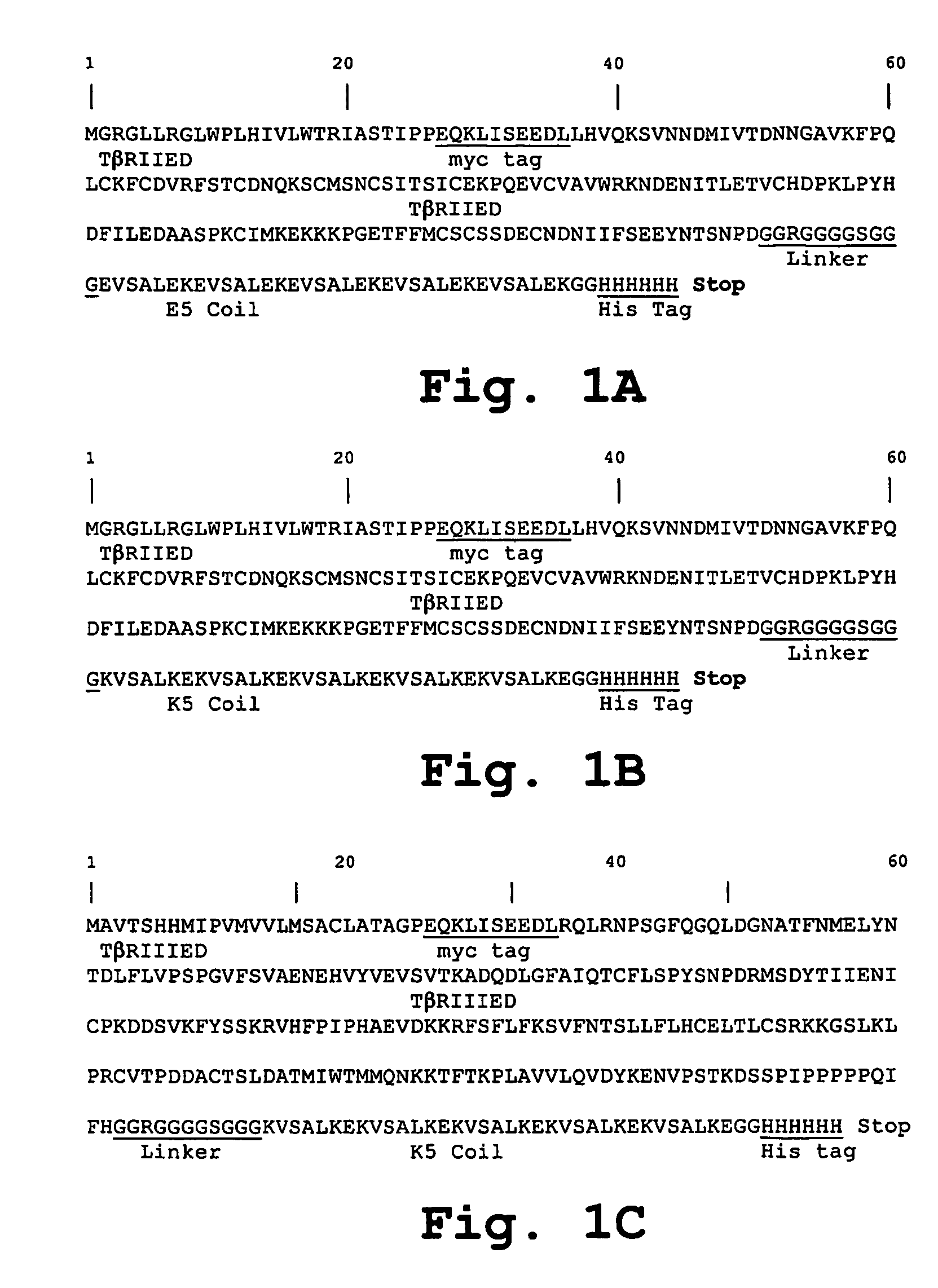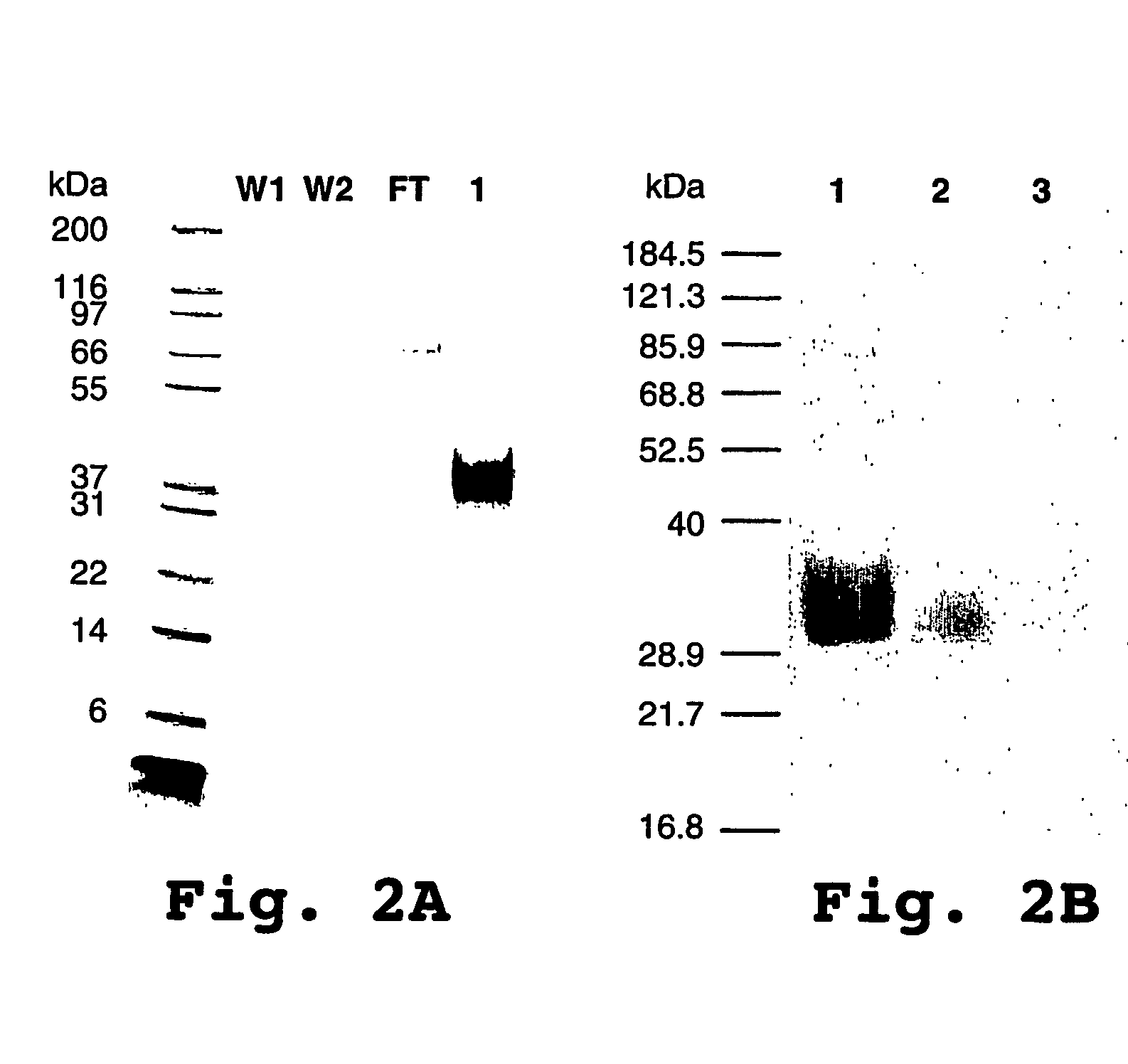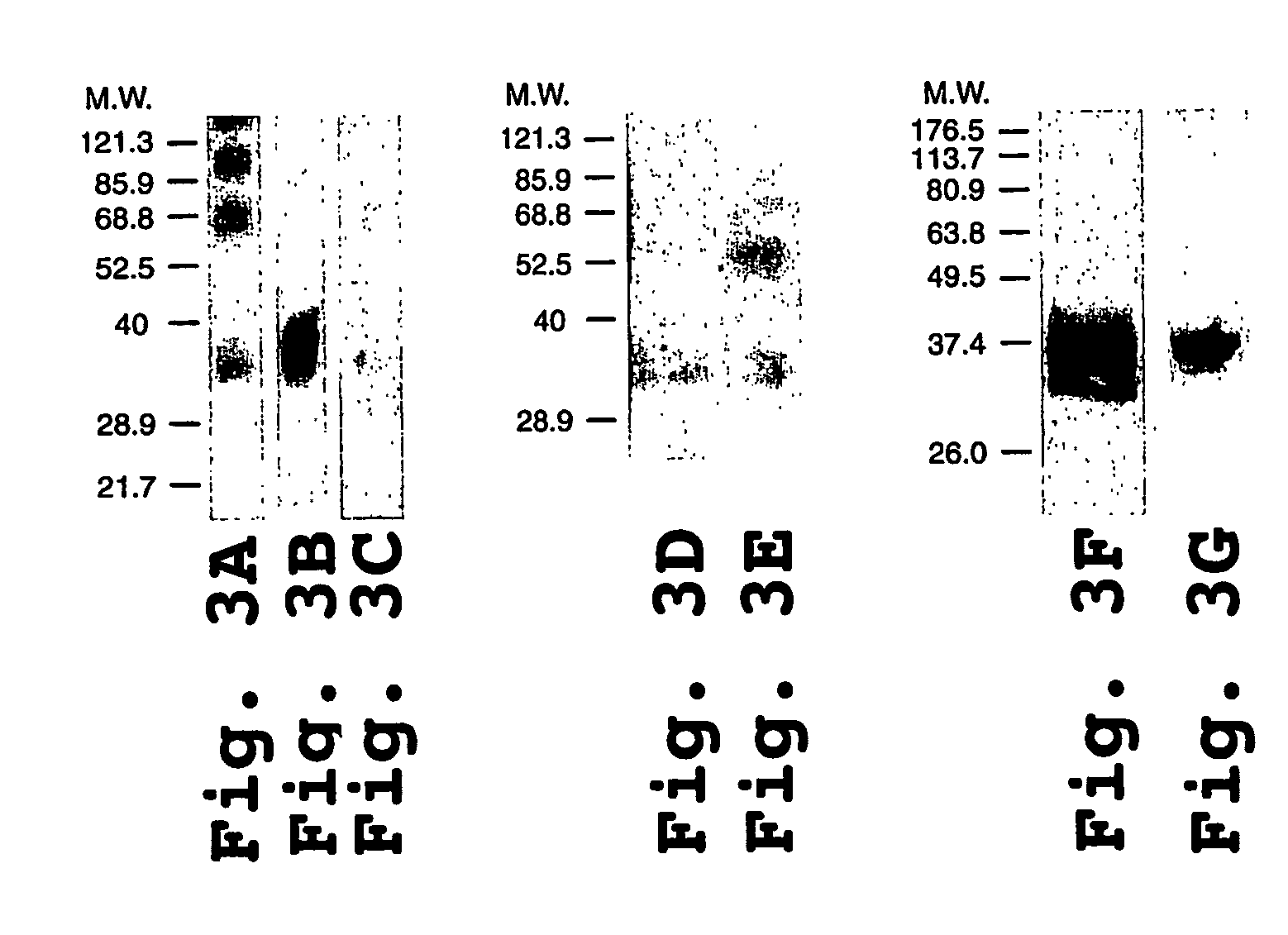Coiled-coil fusion proteins comprising cell receptor domains
a fusion protein and cell receptor technology, applied in the direction of growth factor/regulator receptors, peptides, enzymology, etc., can solve the problems of not achieving the proper tertiary or quaternary structure required for maximal biological activity, affecting the expression of recombinant proteins, and a significant technical challenge. achieve the effect of inhibiting kinase activity
- Summary
- Abstract
- Description
- Claims
- Application Information
AI Technical Summary
Benefits of technology
Problems solved by technology
Method used
Image
Examples
example 1
Construction of Expression Vectors for Production of TβRIIED-E5, TβRIIED-K5 and MP-TβRIIIED-K5 Fusion Proteins
[0179]A. Materials
[0180]The pcDNA3 vectors containing the cDNA encoding the E5 and K5 coils (pcDNA3-K5coil and pcDNA3-E5coil) and the pcDNA3 vector containing the cDNA encoding for the N-terminally myc-tagged TGF-β type II receptor (pcDNA3-TβRII) were obtained from The Biotechnology Research Institute (Montreal, Canada). The pcDNA3 vector containing the myc tagged membrane-proximal domain of the TGF-β type III receptor extracellular domain (pcDNA3-MP-TβRIIIED) was prepared as previously described (Pepin, M. C., et al., FEBS Lett. 377:368-372, (1995)). All the enzymes were from New England Biolabs Inc. and were used according to the manufacturer's recommendations. All the primers were purchased from Hukabel Scientific Ltd. (Montreal, Quebec, Canada). Recombinant human TGF-β1 and the anti hTGF-βRII antibody were purchased from R&D Systems (Minneapolis, Minn.). Recombinant huma...
example 2
Dimerization of TβRIIED-E5 with TβRIIED-K5 and with MP-TβRIIIED-K5
[0200]Surface plasmon resonance studies were performed using a BIACORE™ biosensor (see for example U.S. Pat. No. 6,165,335 and related patents) using a running buffer composed of HBS; 20 mM Hepes (pH 7.4), 150 mM NaCl, 3.4 mM EDTA, and 0.05% Tween20 for diluting all the test analytes.
[0201]Anti hTGF-βRII antibody was coupled to the CM5 biosensor chip surface using the standard amine coupling procedure and a flow rate set at 5 μL / min. Sequential injections consisted of a 0.05 M NHS / 0.2 M EDC mixture (25 μL) followed by an anti hTGF-βRII antibody injection (20 μg / mL) in 10 mM acetic acid (pH 4.0) until the desired coupled amount was reached (more than 3500 RUs). A solution of 0.1 M ethanolamine-HCl (pH 8.5, 35 μL) was then used to block the remaining activated carboxyl groups. A control dextran surface was also generated by replacing the anti hTGF-βRII antibody solution with running buffer.
[0202]Three studies were then ...
example 3
Binding Kinetics of TβRIIED-K5 and MP-TβRIIIED-K5 Fusion Proteins
[0207]A. Immobilization of TGF-β1 on CM5 Biosensor Chips
[0208]TGF-β1 surfaces and control dextran surfaces on CM5 sensor chips were prepared as described elsewhere (De Crescenzo, G. et al., J. Biol. Chem. 276, 29632-29643 (2001)) using a standard amine coupling procedure.
[0209]B. Kinetic Assays
[0210]1. Injections of TβRIIED-K5, or Equimolar Mixtures of TβRIIED-K5 and TβRIIED-E5, over TGF-β1
[0211]All the kinetic experiments were carried out at 25° C. with a flow rate of 5 μL / min in the case of TβRIIED-K5 injections, and 50 μL / min in the case of TβRIIED-K5-TβRIIED-E5 mixture injections. Different concentrations of TβRIIED-K5 (9.8, 14, 8, 22.2, 33.3, 50 nM), or TβRIIED-K5 mixed with equimolar concentrations of TβRIIED-E5 (0 to 50 nM), were randomly injected in duplicate over a TGF-β1 surface as well as over a control surface (240 second injections), following which the analyte solution was replaced by buffer for 360 secon...
PUM
| Property | Measurement | Unit |
|---|---|---|
| flow rate | aaaaa | aaaaa |
| molar ratio | aaaaa | aaaaa |
| pH | aaaaa | aaaaa |
Abstract
Description
Claims
Application Information
 Login to View More
Login to View More - R&D
- Intellectual Property
- Life Sciences
- Materials
- Tech Scout
- Unparalleled Data Quality
- Higher Quality Content
- 60% Fewer Hallucinations
Browse by: Latest US Patents, China's latest patents, Technical Efficacy Thesaurus, Application Domain, Technology Topic, Popular Technical Reports.
© 2025 PatSnap. All rights reserved.Legal|Privacy policy|Modern Slavery Act Transparency Statement|Sitemap|About US| Contact US: help@patsnap.com



